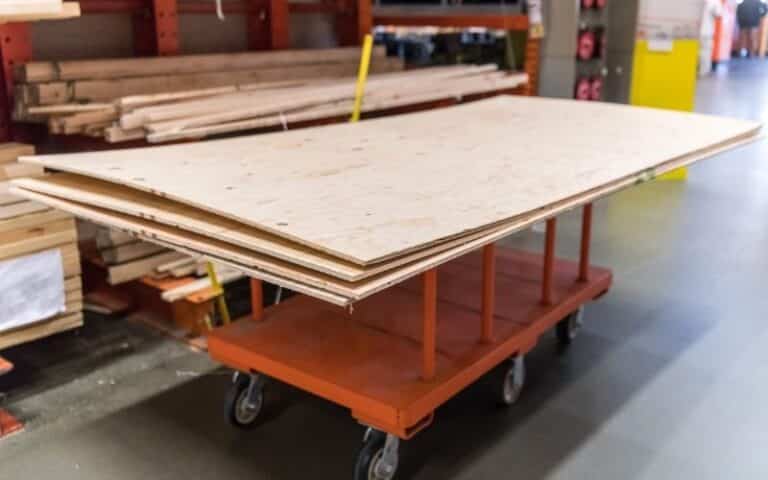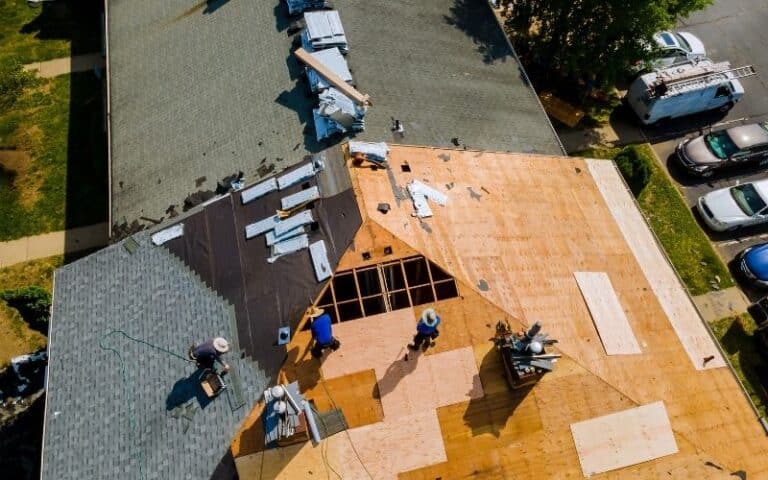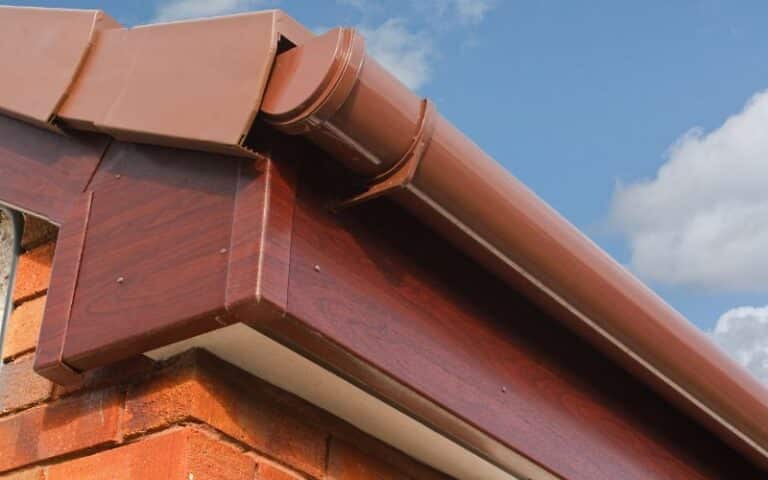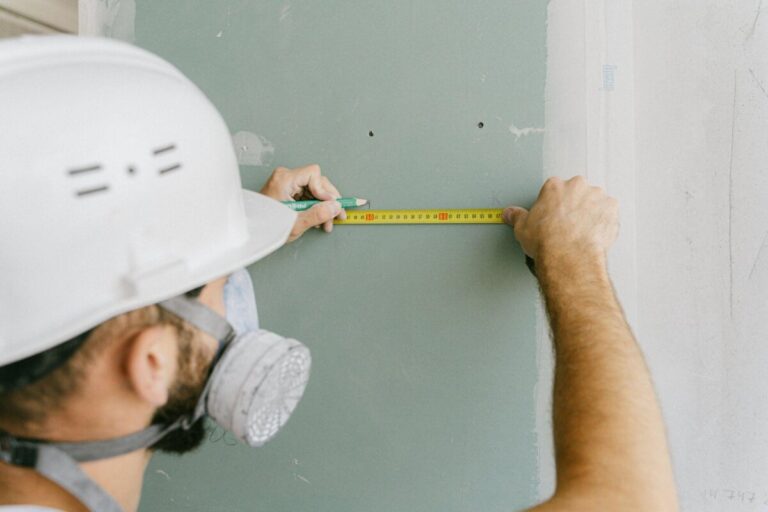You might have heard the term square used to describe the size of your roof if you need to replace it and are gathering quotes.
Because no matter how the roof is laid out or shaped, the measurement is set to standard using a square.
One hundred square feet of roof space requires one roofing square. Contractors, producers, and suppliers use the term square as a shorthand to describe the size of a roof.
Roofing tiles come in different sizes, and the number of tiles needed to fill one square on your roof can vary greatly. For example, concrete roof tiles are typically 90 tiles per square foot, whereas clay tiles range from 80 to 100. Other types of tiles can have up to 160 tiles per square inch.
Ready for a Roofing Quiz?
How Many Roof Tiles Are In A Square Meter?
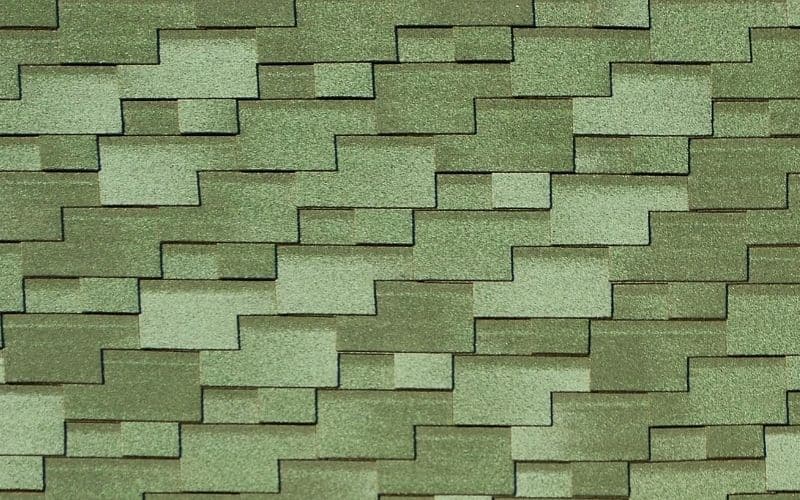
The total amount of roof tiles required per square meter differs from less than ten to more than sixty. Plain roof tiles are usually 265x165mm in size.
These tiles have a wrapping capacity of 60 tiles per meter squared with a minimal level headlap of 65mm and a maximum bulkhead gauge of 100mm.
Roof tiles, on the other hand, come in a wide variety of body shapes, and roof structures can differ widely.
Therefore, the number of roof tiles required can be affected by the size and design of your chosen roof tile, whether the tiles are interlocking or not.
How Many Clay Roof Tiles Are In A Square Meter?
Some clay tiles can range from 80 to 100. Clay tiles have a minimum pitch of 35 degrees or 90 degrees if hung vertically. For example, a plain interlocking tile with a 15-degree rise is the Sandtoft 20/20 clay tile.
Clay tiles typically weigh 30 to 65 kg per square meter. The brand you select will, however, affect the weight. Clay weighs between 600 and 650 pounds per 100 square feet.
How Many Concrete Roof Tiles Are In A Square?
Typically, concrete roof tiles are 90 per square meter. The roofing industry defines 1 square 10 feet by 10 feet area on your roof.
Concrete roof tiles typically weigh between 9.5 and 12 pounds per square foot. The 8×8-inch square tile is the most popular shape for cement tiles.
However, these typical measurements result in an encaustic tile pattern of 16 inches by 16 inches.
Therefore, square and rectangular border tile designs are preferable to enclose a floor area.
The minimal level pitch for plain concrete tiles will typically be 35°, which is another reason users who use them frequently choose them.
How Many Small Roof Tiles Are In a Square Meter?
The quantity of roof tiles required per square meter differs between 10 and 60. Ordinary plain roof tiles are 265x165mm in size.
The covering capacity of these tiles, which have a minimal level headlap of 65mm and a maximum batten gauge of 100mm, is 60 tiles per square meter.
Because roof tiles come in different sizes and shapes, the number of tiles needed can depend on variables such as the size of the roof tile, interlocking capability, roof pitch, the amount of necessary headlap, and batten gauge.
How Do I Calculate How Many Roof Tiles I Need?
Calculating tile roof costs can be more accessible if you have a roof tile calculator.
But If you do not have a calculator for the roof tiles needed, you will have to calculate the number of tiles required for your roof by yourself.
This calculation gets its base from two conditions: the specified tile coverage or if you do not have tile coverage.
#1. When You Have the Tile Coverage?
If the supplier has specified tile cover per square meter, simply multiply this figure by the size of your roof.
If the coverage of tiles is available, let’s assume 60, for example.
The roof Area is (m2) x Tiles per Square Meter.
Supposing each square meter of concrete tile requires 11.9 tiles at a roof pitch of 30 degrees. for a roof area of 60 square meters,
60m2 x 11.9 = 719.
719 is the tile coverage, but it is recommended you get 755. which includes at least 5% of waste in your project to be more accurate.
It will cover damaged materials while transported, on the job site, or in situations where tiles need to fit.
#2. When You Do Not Have the Tile Coverage?
In a condition where the tile Estimate is unavailable, you will have to do additional work on the number of tiles needed.
That requires you to calculate the following measurements to figure the number of tiles that will be necessary for your roof:
- The roof area.
- The roof Pitch.
- R after Length.
- Cover the Width of the tile you have chosen.
#3. Calculating Your Roof Area?
Calculating the square footage of your roof is simple if it has a traditional rectangular gable design. Simply divide the result by two after multiplying the length of your roof by the slope height.
That is roof length x roof slope height x 2 = roof area (m2).
If your roof length is 8m, for example, and your roof slope height is 6.5m;
(8m x 6.5m) x 2 = 104m2.
If the shape of your roof is unusual, it is best to cut it into separate squares or rectangles. Then, you can calculate each area’s square meters differently and add the results to get your total roof area.
By accurately calculating the extent of your roof, you can order the correct number of roof tiles, minimizing waste and downtime.
#4. Working On the Pitch Of Your Roof
As long as you have a measuring tape, a spirit level, a calculator, and access to your loft space, calculating the pitch of your roof shouldn’t be too difficult.
You will need to know your roof’s rise, which is the height of the apex above the building wall, and you also need to see the Run, which is the separation between the wall and the extreme.
Roof Pitch = (1 ÷ Tangent (Rise ÷ Run))*180/π.
For instance, suppose you have a roof that has a 10 m rise and an 8 m run.
- 10 ÷ 8 = 1.25
- 1 ÷ 1.25 = 0.8
- 8 x 180/π = 45.83
- your roof pitch will be 45.84°
#5. Calculating Rafter Length
The Pythagoras theorem can determine the rafter’s length.
a2 + b2 = c2. Using this formula, if the run is 5 meters and the rise is 8 meters, you will have 52 + 82 = 89. The square root of the answer will be √89 = 9.43
In that case, our Rafter Length is 9.43 meters.
#6. Calculating the Number of Tiles Needed For Your Roof
Now we will have to add up everything.
- A ÷ X = D is the number of tiles needed for one row across the width
- C ÷ Y = E number of rows needed
- D x E = F-number of tiles needed for one side of the roof
- F x 2 = total number of tiles needed
for example, let’s use a typical gable roof with dimensions of 10 meters in length, 5 meters in width, 25 degrees of pitch, and 2.575 meters in length
using the brit met Slate 2000 as an example. It has a cover width of 1.25m (X) and a batten gauge of 0.369m.
- 10m ÷ 1.250m = 8 number of tiles needed for one row
- 585m ÷ 0.369m = 8 number of rows needed, rounded up
- 8 x 8 = 64 number of tiles needed for one side of the roof
- 64 x 2 = 128
If a 5 percent waste is preferable, your project will require 135 tiles.
Read also: What Can You Use to Cover Slate Tiles?
Conclusion
Roofing tiles come in different sizes and designs. Calculating roof tiles is easier when you have a roof tile calculator. The number of tiles needed per square meter on most occasions is different.

